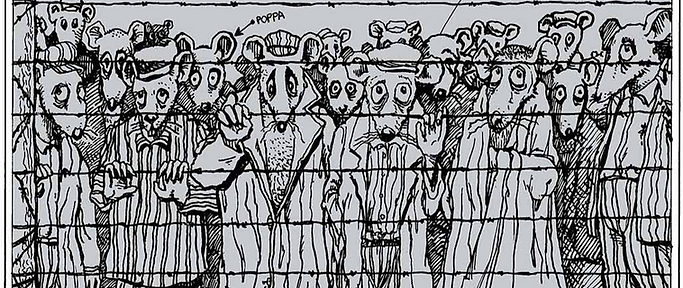Who Will Draw Our History?
Graphic Narratives of Witness, 1944-1949
Visual Storytelling: Witnesses of Life in Extremis

What if Maus wasn't the first Holocaust graphic narrative?

Sometimes, it pays to get lost. To go to an archive within a clear sense of what you're looking for. To cast a wide net and open your research to chance and serendipity.
This is exactly how I stumbled upon this overlooked medium.
From poignant sketches to vibrant illustrations, each work offers a glimpse into the artist's experiences during the Holocaust. These overlooked testimonial objects shed light on artmaking in the immediate postwar period.
This digital publication presents itself as a “life edition” which can, and will, be expanded upon in the future as new materials and sources are discovered.

“This series of images tells something about the
history of fascism that no one has ever managed to tell
in words or in writing." - Béla Zsolt, 1947
"The lens of the camera cannot capture physical suffering and mental anguish – it only reveals the end result unrelentingly." - Alfréd Trosztler in Those Who Died and Those Who Fought for the Honor of Our People, Documentation Department of the Jewish Agency for Palestine, Budapest, 1946.
“It was dark inside me, terrible images oppressed me, day and night, and I took them out of myself and I painted them” in order “to banish in form the terrible, the oppressive, to express it […] To name it correctly so that others could recognize it, to draw its murderous face so that it would be clear to others; to confirm the disgust and to affirm the hatred, to strengthen the love and raise the fist against the gruesome, thousand-faced fear." - Lea Grundig

Blog posts
Historical Insights
The Postwar and Periodization
When did the war end? And when did the "postwar" begin?
Historical Insights
Sites of Creation: DP Camps
Mapping Postwar Art, 1944-1948
Art in Transit
Learn about the social and cultural context behind these works. These insights provide a rich backdrop for interpreting the visual representations and themes depicted in the albums.

Portfolio Collections

About Me
Rachel E. Perry, Ph.D.







